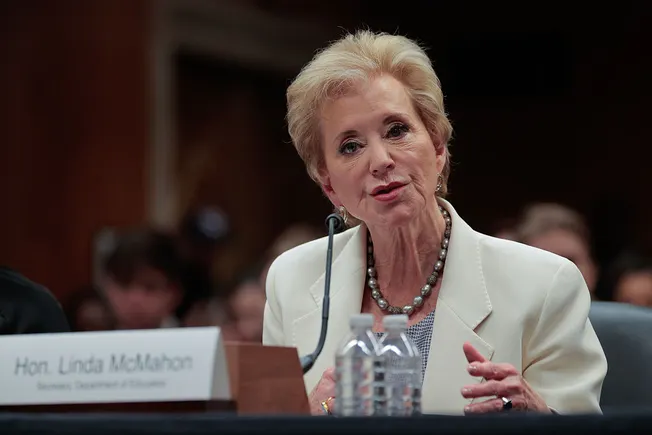by Daniel B. Griffith
fizkes/Shutterstock
What are the traits of an effective leader? Of an ineffective one? Ask any scholar, writer, or other expert on leadership, and you’ll receive widely differing perspectives. Google provides endless references to “leadership,” some reliable, others suspect. It also depends on your lens — is the best leader authoritative, empathetic, laissez faire, collaborative, etc.?
I will not speak definitively on this subject. Rather, I humbly share my impressions on leadership, good and bad, upon my retirement following a long career in higher education. In this article, I reflect on experiences that helped shape my career — through positive influences and lessons on what not to do.
Communication: Direct Talk vs. Triangulation
My worst work experience was in the hands of a colleague who disliked the way I did things and lacked the professionalism to speak directly with me. Rather, they complained to higher ups. But it is the leader’s lack of professionalism that is at issue. The leader chose to accept the complainer’s view at face value, assumed the worst in me, failed to get my perspective, and came back to force my compliance.
I’ve written previously about employees who work around others and the bosses who enable them. Triangulation is among the worst forms of bullying. Effective leaders go to the source to understand a situation before deciding. They encourage communication at the lowest possible denominator, such as asking an employee to work through their differences with another employee before approaching the boss, and only after genuine attempts have been unsuccessful.
Change Management: Sensitivity vs. Coldness
I faced a few difficult transitions in my work life. In one case, I was led to believe that my input in the transition mattered. What were my ideas? What could I offer? I was ultimately presented an “opportunity” that bore little resemblance to these conversations. And it was presented coldly without sensitivity to the anxieties I might be experiencing, as many employees would have in these situations.
Conversely, I have had leaders deliver bad news and signal rough times ahead. They did so with grace and commitment to weathering the storm with the team and communicating change, new expectations, and difficult challenges as soon and as transparently as possible. Ineffective leaders see the cogs before them, placing them mechanically in the wheel without concern about the impact of their decisions. Effective leaders see living beings with hopes and anxieties and a righteous expectation to be dealt with honestly.
Performance: Feedback vs. Check Marks
Some departments in which I worked didn’t take formal performance reviews seriously — and I was grateful. Managers and employees often view formal review processes as inequitable, meaningless, and complete distractions to getting work done.
I often wonder whether the manager who subjectively “eyeballs” employees to determine performance and associated rewards really does any worse than the manager who sweats the paperwork and places tick marks to arrive at mathematical differentiations to justify reward decisions. Even the best leaders conduct formal reviews due to organizational expectations but recognize bad performance systems and find workarounds to appropriately acknowledge and support employees.
I’m not suggesting that my performance was unexamined. But it was in the form of conversations, feedback, and accountability measures fairly discussed and negotiated. Indeed, Christopher Lee, author of “Performance Conversations: How to Use Questions to Coach Employees, Improve Productivity, and Boost Confidence (Without Appraisals!)” notes that, if done correctly, a performance conversation can actually work to coach employees, boost confidence, and help both the employee and manager each do their jobs better. The best leaders manage performance based on each person’s unique contributions while others rely on poorly conceived measuring sticks that lump everyone together.
Correction: Goldfish vs. Elephant
I made a mistake once — okay, several times. I had a difficult conversation with a boss who explained how my perceptions on a situation were off base. I understood and regretted the matter. She then said she’d like to put the matter in the past, which we did — a leader with great integrity, grace, and the memory of a goldfish — at least with respect to my mistakes.
In contrast, a different manager approached me about my actions involving a situation. We talked, and I thought that was the end of it. Three weeks later, I attended a meeting with my manager and their boss on a wholly separate matter, or so I thought, only to be cornered about the previous situation. My manager failed to come to my defense and say we had discussed the matter previously, allowing me to be skewered — leaders with the memory of an elephant, allowing the past to linger and fuel my distrust.
Want to get the best out of the flawed humans you lead? Don’t ambush them and revisit past mistakes. Correct quickly, restore faith and understanding, and move on.
Managing Conflict: True Engagement vs. False Harmony
I had a conflict with a colleague. Our mutual boss brought us together to talk the matter through and suggested a compromise, to which my colleague immediately agreed. I was hesitant, feeling my concerns hadn’t been fully considered.
Even well-intentioned leaders seek harmony and peace, and may tend to promote compromise, feeling it’s the best way to move forward. My manager’s approach reminds me of King Solomon’s proposal to “cut the baby in half.” My colleague immediately agreed because the baby wasn’t theirs. Yet, unlike the Judgement of Solomon, my deeper investment in the issue (my baby) wasn’t acknowledged.
Effective leaders are comfortable with conflict — their own and among those they lead. If they do intervene, a better approach is to allow the parties to engage, even to allow the conflict to remain unresolved until more understanding can be achieved. It may lead to improved collaboration in the long run.
General Approach to Leadership: Sincere Empowerment vs. Something Else
Many of the ineffective leaders in these situations, and others I’ve experienced, lacked ill intent, but were motivated by their anxieties, egos, and need for control. The best leaders overcome these limitations and support full empowerment, helping followers establish a vision, remaining accessible as needed, cheerleading, and otherwise getting out of the way. Who do you prefer to follow? Which approach will you model?
























